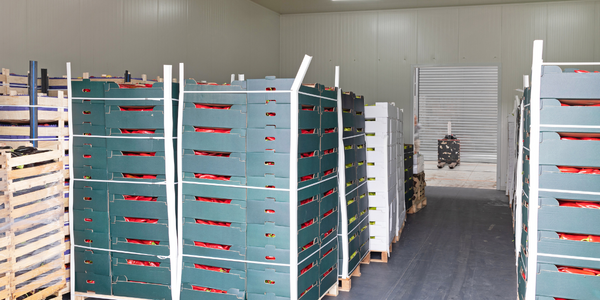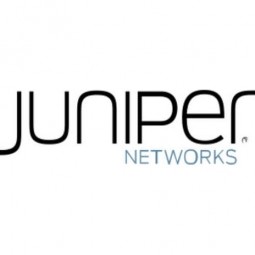Technology Category
- Cybersecurity & Privacy - Intrusion Detection
- Functional Applications - Enterprise Resource Planning Systems (ERP)
Applicable Industries
- Cement
- Food & Beverage
Use Cases
- Construction Management
- Infrastructure Inspection
Services
- System Integration
About The Customer
The customer in this case study is a large enterprise food company. The company has a policy against publicly endorsing vendors, hence the company's name has been kept confidential. The company operates on a large scale and was facing significant challenges in terms of its security infrastructure. The company was seeking a solution that could easily integrate with its existing infrastructure, provide strong detection of advanced threats, and be deployed across multiple sites and managed as a single system. The company was also looking for a cost-effective solution.
The Challenge
The case study revolves around a large enterprise food company that was facing significant business challenges. The company was struggling with the detection of advanced threats hiding in web, email, and lateral spread traffic. The existing infrastructure was not integrating well with the necessary security measures, and the company was unable to deploy security systems across multiple sites and manage them as a single system. The company was also grappling with the prioritization of newly discovered threats based on risk and severity. Furthermore, the company was seeking a cost-effective solution that could easily integrate with their existing infrastructure and did not require specialized appliances.
The Solution
The company turned to Cyphort to address these challenges. Cyphort offered a solution that easily integrated with the company's existing infrastructure and provided strong detection of advanced threats. The solution was flexible enough to be deployed on commercial servers, VMs, and cloud, eliminating the need for specialized appliances. Cyphort's system allowed the company to deploy across multiple sites and manage as a single system. The solution also prioritized newly discovered threats for the security teams based on risk and severity. The company used Cyphort's web collectors positioned at their network perimeter to detect threats as they entered or exited their network. They also used collectors to examine traffic as it traversed their network laterally to look for threats spreading internally. The solution integrated with their SIEM or other orchestration tools to provide additional intelligence around potential threats.
Operational Impact
Quantitative Benefit

Case Study missing?
Start adding your own!
Register with your work email and create a new case study profile for your business.
Related Case Studies.

Case Study
The Kellogg Company
Kellogg keeps a close eye on its trade spend, analyzing large volumes of data and running complex simulations to predict which promotional activities will be the most effective. Kellogg needed to decrease the trade spend but its traditional relational database on premises could not keep up with the pace of demand.

Case Study
System 800xA at Indian Cement Plants
Chettinad Cement recognized that further efficiencies could be achieved in its cement manufacturing process. It looked to investing in comprehensive operational and control technologies to manage and derive productivity and energy efficiency gains from the assets on Line 2, their second plant in India.

Case Study
HEINEKEN Uses the Cloud to Reach 10.5 Million Consumers
For 2012 campaign, the Bond promotion, it planned to launch the campaign at the same time everywhere on the planet. That created unprecedented challenges for HEINEKEN—nowhere more so than in its technology operation. The primary digital content for the campaign was a 100-megabyte movie that had to play flawlessly for millions of viewers worldwide. After all, Bond never fails. No one was going to tolerate a technology failure that might bruise his brand.Previously, HEINEKEN had supported digital media at its outsourced datacenter. But that datacenter lacked the computing resources HEINEKEN needed, and building them—especially to support peak traffic that would total millions of simultaneous hits—would have been both time-consuming and expensive. Nor would it have provided the geographic reach that HEINEKEN needed to minimize latency worldwide.

Case Study
Energy Management System at Sugar Industry
The company wanted to use the information from the system to claim under the renewable energy certificate scheme. The benefit to the company under the renewable energy certificates is Rs 75 million a year. To enable the above, an end-to-end solution for load monitoring, consumption monitoring, online data monitoring, automatic meter data acquisition which can be exported to SAP and other applications is required.

Case Study
Coca Cola Swaziland Conco Case Study
Coco Cola Swaziland, South Africa would like to find a solution that would enable the following results: - Reduce energy consumption by 20% in one year. - Formulate a series of strategic initiatives that would enlist the commitment of corporate management and create employee awareness while helping meet departmental targets and investing in tools that assist with energy management. - Formulate a series of tactical initiatives that would optimize energy usage on the shop floor. These would include charging forklifts and running cold rooms only during off-peak periods, running the dust extractors only during working hours and basing lights and air-conditioning on someone’s presence. - Increase visibility into the factory and other processes. - Enable limited, non-intrusive control functions for certain processes.

Case Study
Temperature Monitoring for Restaurant Food Storage
When it came to implementing a solution, Mr. Nesbitt had an idea of what functionality that he wanted. Although not mandated by Health Canada, Mr. Nesbitt wanted to ensure quality control issues met the highest possible standards as part of his commitment to top-of-class food services. This wish list included an easy-to use temperature-monitoring system that could provide a visible display of the temperatures of all of his refrigerators and freezers, including historical information so that he could review the performance of his equipment. It also had to provide alert notification (but email alerts and SMS text message alerts) to alert key staff in the event that a cooling system was exceeding pre-set warning limits.







